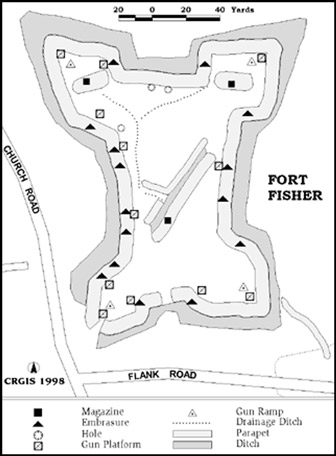Today, earthworks management is viewed as an evolving science that requires an integrated approach to natural and cultural resource management. Many parks in the public and private sectors employ a variety of techniques in an effort to expand the range of successful management practices.
Preservation Studies

Earthworks place a barrier between an army and its enemy, and in their most basic form consist of a protective embankment or mound of earth called a parapet and a ditch that supplies the earth to build the parapet. In some fortifications, the parapet may be reinforced by a facing material, such as wood, stone, brick or sandbags, which is called a revetment. As military technology advanced, the design and construction of earthworks responded by expanding in complexity to include numerous features such as batteries, gun emplacements, magazines, and dugouts
Earthworks surviving in today’s landscape range from low, eroded mounds to massive well-preserved forms with clearly articulated features. Erosion, the process whereby particles of soil dislodge from earthworks and are transported away, poses the greatest threat to their longevity.
The National Park Service manages military earthworks at numerous locations with surviving examples from the War of 1812. Many state and local parks also actively manage earthworks from the war.
In the mid-1980s the NPS conducted a study of military earthworks in four Virginia battlefield parks. This effort resulted in the Earthworks Landscape Management Manual (1989). The study found two conditions critical to earthworks preservation: first, to combat the destructive consequences of erosion, maintain a healthy vegetative cover on the earthworks with as little human intervention as possible. The study’s second important finding was military earthworks in forested conditions exhibited the least amount of erosion and contained the sharpest profiles and most legible features. In 1995, NPS initiated the Guide to Sustainable Earthworks to further earthworks management research. The research supported the two major findings of the Earthworks Landscape Management Manual, as well as indicated that a cover of native species, once established, could be equal to or superior to lawn-quality turf grasses for adaptation to the changing climate and conditions on the earthworks and, in the long term, should require the least human intervention.
Today, earthworks management is viewed as an evolving science that requires an integrated approach to natural and cultural resource management. Many parks in the public and private sectors employ a variety of techniques in an effort to expand the range of successful management practices.
Learn More
Part of a series of articles titled Preserving the War of 1812 for Future Generations.
Last updated: August 14, 2017
